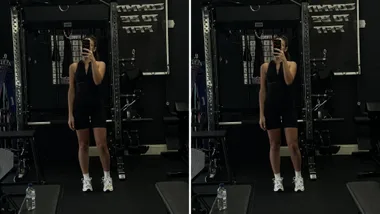Beautiful crocheted jug covers and cloth edges never go out of style. As we receive so many requests from readers for this style of project we thought it was time to run a lovely tea story from our archives. There is even a crochet jug cover that comes complete with it’s own teacup decoration!
Materials One ball each Twilleys Twenty white crochet cotton and variegated crochet cotton
Twelve glass beads
One 0.75mm crochet hook
Craft Glue
Plastic thimble
Measurements
Approximately 20cm diameter (from point to point)
Method
Using hook and white cotton, make 10ch, join with sl st to form ring.
1st row. 4ch, 35dtr into ring, join with sl st in 4th ch.
2nd row. 5ch miss 1dtr, 1tr in next dtr, 2ch; rep from to end, join with sl st in 3rd of 5ch.
3rd row. 1 sl st in first sp, 3ch, 4tr in same sp, drop lp from hook, insert hook into back of 3rd ch, draw dropped lp through firmly (Bbl formed); 5ch, 5tr in next 5 sp, drop loop from hook, insert hook into back of 1st tr, draw dropped lp through (another Bbl formed); rep from ending with 2ch, 1tr into top of first Bbl.
4th row. 6ch, 1dc in next lp; rep from ending with 3ch, 1tr into tr of previous row.
5th row. 7ch, 1dc in next lp; rep from all around, edning with 3ch, 1dtr into tr of previous row.
6th row. 7ch, 1dc in next lp, 11dtr in next lp, 1dc in next lp; rep from , omitting 1dc at end of last rep, 1sl st in dtr of previous row.
7th row. 1 sl st to centre of next lp, 1dc in same lp, 7ch, 1dc in next dtr, (2ch, miss 1dtr, 1dc in next dtr) 5 times, 7ch, 1dc in next lp; rep from ending last rep with 3ch, 1dtr in first dc.
8th row. 7ch, 1dc in next lp, 7ch (1Bbl in next 2ch lp, 2ch) 4 times, 1Bbl in next 2ch lp, (7ch, 1dc in next lp) twice; rep from omitting (7ch, 1dc) twice at end of last rep, 3ch, 1dtr in dtr of previous row.
9th and 10th rows. As 8th row, having 1Bbl less of each pineapple and 1 lp more between each row (3Bbls and 5 lps on 10th row).
11th row. (7ch, 1dc) in next 4 lps, 4ch, 2dtr into 2ch lp, 4ch, 2dtr in next 2ch lp, 4ch, 1dc in next lp; rep from to last 2dtr, 2ch, 1tr in the first 7ch lp.
12th row. (7ch, 1dc) in next 5 lps, 3ch, 1dtr in top of each dtr of last row leaving last lp of each on needle, yarn over hook pull through to form GR, 3ch, 1 GR in middle 2ch of 4ch lp, 2ch, 1GR in next 2dtr, 3ch, 1dc in next lp; rep from to last GR, 1tr in first 7ch lp.
13th row. (7ch, 1dc) in next 5 lps, 7ch, 1dc in top of first GR, (5ch, 1dc) in each of next 2GR; rep from to last 5ch, substitute for this 2ch, 1tr.
14th row. (7ch, 1dc) in each lp, ending 3ch, 1dtr in last lp.
15th row. 4ch, 5dtr in same lp, 1dc in next lp, (7ch, 1dc) in next 2 lps, 11dtr in next lp, 1dc in next lp; rep from to last lp, 5dtr in last lp, join with sl st to top of 4ch at beg.
Break off yarn and fasten off securely.
Join in variegated thread on which 12 beads have been threaded. Join should be at right of any fan.
16th row. 1dc in each of first 6dtr, 6ch, slide one bead over ch above 6th dtr, 1dc in same dtr, 1dc in each of next 5dtr, (1dc in dc, 7dc in lp) twice; rep from to end, join with sl st, fasten off.
Saucer detail
1st row. Join variegated cotton into foundation ring, work (1dc, 1ch) into every 2nd st, Join with sl st.
2nd row. Sl st nto first ch sp, 4ch (as dtr), 1dtr into same sp, 2dtr into each sp to end. Join with sl st.
3rd row. 3ch, miss next dtr, 1dc in next st, 2ch; rep from to end, sl st to join. Fasten off securely.
Cup detail
1st row. Join variegated thread in foundation row, work 1dc in every 2nd st, join with sl st.
2nd row. 3ch as first tr, 2tr into next dc, 1tr into next dc; rep from to end, sl st to join.
3rd row. 3ch as tr, 1tr in each tr; sl st to join.
4th and 5th rows. As 2nd and 3rd rows. Do not break off yarn.
Handle. 8ch, 1 sl st into side of Cup (2nd row), turn, 10dc into lp, sl st into 1st ch. Fasten off securely.
To finish. Coat Cup and Saucer with craft glue to stiffen and allow to dry using a plastic thimble to hold the cup to the desired shape.
General abbreviations
Bbl: bobble
beg: beginning
ch: chain
cont: continue
dc: double crochet
dtr: double treble
GR: group
lp: loop
rep: repeat
rnd: round
sl: slip
sp: space
st: stitch
tr: treble
Newsletter conversion description. Get the latest in your inbox.













































